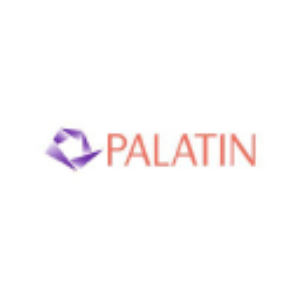Palatin Announces Presentation of Positive Protective Effects of PL8331 and PL9654 on Retinal Inflammation at the 2021 American Society of Retina Specialists (ASRS) Annual Meeting
Palatin Technologies, Inc. (PTN) announced promising results on melanocortin agonists PL8331 and PL9654 at the 2021 ASRS Annual Meeting. The data showcases protective effects against retinal inflammation in mouse models, highlighting potential treatments for diabetic retinopathy. CEO Carl Spana emphasized ongoing positive results in inflammatory disease models. The presentation, scheduled for October 9, 2021, will feature these findings, reinforcing the company's focus on the melanocortin system's therapeutic applications.
- Positive pre-clinical data for PL8331 and PL9654 in retinopathy models.
- Potential applications in treating diabetic retinopathy and choroidal neovascularization.
- CEO highlighted consistent positive data in various inflammatory disease models.
- None.
Insights
Analyzing...
CRANBURY, N.J., Sept. 27, 2021 /PRNewswire/ -- Palatin Technologies, Inc. (NYSE American: PTN), a specialized biopharmaceutical company developing first-in-class medicines based on molecules that modulate the activity of the melanocortin peptide receptor system, announced the presentation of the protective effects of melanocortin 1 receptor agonists PL8331 and PL9654 in mouse models of retinopathy, at the 2021 Annual Meeting of the American Society of Retina Specialists (ASRS), being held virtually October 8-12, 2021.
The presentation highlights the positive pre-clinical data in mouse models of retinopathy, and the possible utility of melanocortin receptor agonists in the treatment of diabetic retinopathy and choroidal neovascularization.
"The research and development team at Palatin continues to produce positive data in inflammatory disease models, including front of the eye, the gastrointestinal system, and now back of the eye," said Carl Spana, Ph.D., President and Chief Executive Officer of Palatin. "Our preclinical and clinical research continues to build support for the melanocortin system as a target for treating a wide range of inflammatory diseases. The preclinical retina inflammation data is exciting and provides support for moving compounds in our robust melanocortin agonist platform towards human clinical studies."
Presentation details: | |
Date: | October 9, 2021 |
Time: | 5:35 pm to 6:35 pm Central Time |
Format: | Poster Presentation |
Presenter: | John Dodd, Ph.D., Palatin Preclinical Development |
Title: | "Protective Effects of Two Melanocortin Agonists Delivered by Intravitreal |
About Melanocortin Receptor Agonists and Inflammation
The melanocortin receptor ("MCr") system has effects on inflammation, immune system responses, metabolism, food intake, and sexual function. There are five melanocortin receptors, MC1r through MC5r. Modulation of these receptors, through use of receptor-specific agonists, which activate receptor function, or receptor-specific antagonists, which block receptor function, can have medically significant pharmacological effects.
Many tissues and immune cells located in the eye (and other places, like the gut and kidney) express melanocortin receptors, empowering our opportunity to directly activate natural pathways to resolve disease inflammation.
About Palatin
Palatin is a biopharmaceutical company developing first-in-class medicines based on molecules that modulate the activity of the melanocortin and natriuretic peptide receptor systems, with targeted, receptor-specific product candidates for the treatment of diseases with significant unmet medical need and commercial potential. Palatin's strategy is to develop products and then form marketing collaborations with industry leaders to maximize their commercial potential. For additional information regarding Palatin, please visit Palatin's website at www.palatin.com.
Forward-looking Statements
Statements in this press release that are not historical facts, including statements about future expectations of Palatin, such as statements about clinical trial plans and potential results for clinical or pre-clinical programs, are "forward-looking statements" within the meaning of Section 27A of the Securities Act of 1933, Section 21E of the Securities Exchange Act of 1934 and as that term is defined in the Private Securities Litigation Reform Act of 1995. Palatin intends that such forward-looking statements be subject to the safe harbors created thereby. Such forward-looking statements involve known and unknown risks, uncertainties and other factors that could cause Palatin's actual results to be materially different from its historical results or from any results expressed or implied by such forward-looking statements. Palatin's actual results may differ materially from those discussed in the forward-looking statements for reasons including, but not limited to, results of clinical trials, regulatory actions by the FDA and other regulatory and the need for regulatory approvals, Palatin's ability to fund development of its technology and establish and successfully complete clinical trials, the length of time and cost required to complete clinical trials and submit applications for regulatory approvals, products developed by competing pharmaceutical, biopharmaceutical and biotechnology companies, commercial acceptance of Palatin's products, and other factors discussed in Palatin's periodic filings with the Securities and Exchange Commission. Palatin is not responsible for updating for events that occur after the date of this press release.
![]() View original content to download multimedia:https://www.prnewswire.com/news-releases/palatin-announces-presentation-of-positive-protective-effects-of-pl8331-and-pl9654-on-retinal-inflammation-at-the-2021-american-society-of-retina-specialists-asrs-annual-meeting-301385088.html
View original content to download multimedia:https://www.prnewswire.com/news-releases/palatin-announces-presentation-of-positive-protective-effects-of-pl8331-and-pl9654-on-retinal-inflammation-at-the-2021-american-society-of-retina-specialists-asrs-annual-meeting-301385088.html
SOURCE Palatin Technologies, Inc.








